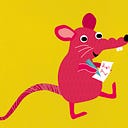How to Be Happy Lesson #12: Get Schooled
As I explore this topic more and more, I’ve become aware of how ill-qualified I am to be offering advice on it, much less on anything. For example, rather than listen to me, you could just sign up for “Psych 157: Psychology and the Good Life” on Coursera for free (online the title is “The Science of Well-Being“). Or you could read, as I am doing right now, Adam Sternbergh’s article on The Cut titled “Read This Story and Get Happier.” Sternbergh subtitles his piece “The most popular course at Yale teaches how to be happy. We took it for you.”
Psych 157 was created by Yale psychology professor Laurie Santos. In its first and only year, nearly a quarter of Yale’s undergraduate students (over 1,200) enrolled in it. Santos thinks “Yale students are interested in the class because, in high school, they had to deprioritize their happiness to gain admission to the school, adopting harmful life habits that have led to what she called ‘the mental health crises we’re seeing at places like Yale.’” (This from The New York Times‘ “Yale’s Most Popular Class Ever: Happiness.”)
In the bricks-and-mortar world, Santos delivered twice-weekly Psych 157 lectures. Her initial (and final) class was so large Yale had to hire twenty-four teaching fellows to help manage it, luring some of them in from departments outside of psychology. The class took place in an 844-seat chapel converted to a classroom and two smaller lecture auditoriums where the students participated by live feed. The students took quizzes and a mid-term exam and then turned in a personal self-assessment project as their final assignment. Before taking the class, students had to complete a prerequisite: UPenn’s “Authentic Happiness Inventory.” Santos will not offer the live class again because of the huge drain on resources.
So, an online class instead. No big deal, right? Wrong. Sternbergh writes
…be prepared: Before we get happiness right, we have to understand why we typically get it so wrong. The first nine (!) lectures on the Yale course syllabus feature titles like “What Doesn’t Lead to Happiness I,” “What Doesn’t Lead to Happiness II,” and “Why Your Mind Sucks.”
He then summarizes the live-class lectures, midterm exam, and the final exam “How Happy Can You Be?” The latter involves retaking the Authentic Happiness Inventory. The first lecture is titled “The G.I. Joe Fallacy.” It teaches us that our minds are good at tricking us into believing things that aren’t true, including what will make us happy:
Nearly everything you think will make you happier won’t, because nearly everything you’re likely to list — assuming, of course, that your basic life needs are taken care of — is some circumstantial change: more money, a different home or job, a long vacation, or even that enticing snack that lies just beyond the vending-machine glass. Your mind is constantly telling you that if you just got those things, you’d finally, truly, unequivocally be happy. But your mind is wrong and science is right.
Science, in this case, tells us that “we are inclined to assume that circumstances play the biggest role in our happiness, when research suggests they play the smallest role” (less than ten percent, in fact). We also “grossly underestimate the extent to which changing our behaviors, rather than our circumstances, can significantly increase our well-being.”
So, Lesson #12 in how to be happy boils down to this: If you think you know what will make you happy, think again. Or, for a better result, read Sternbergh’s article. And, if you want to go whole hog, sign up for Cousera’s “The Science of Well-Being.” Doing that is easy. No promises about what comes after, however. As Sternbergh explains, “The first lesson of ‘Psychology and the Good Life’ is that happiness is something worth working at. The final lesson is that the class never truly ends.”
